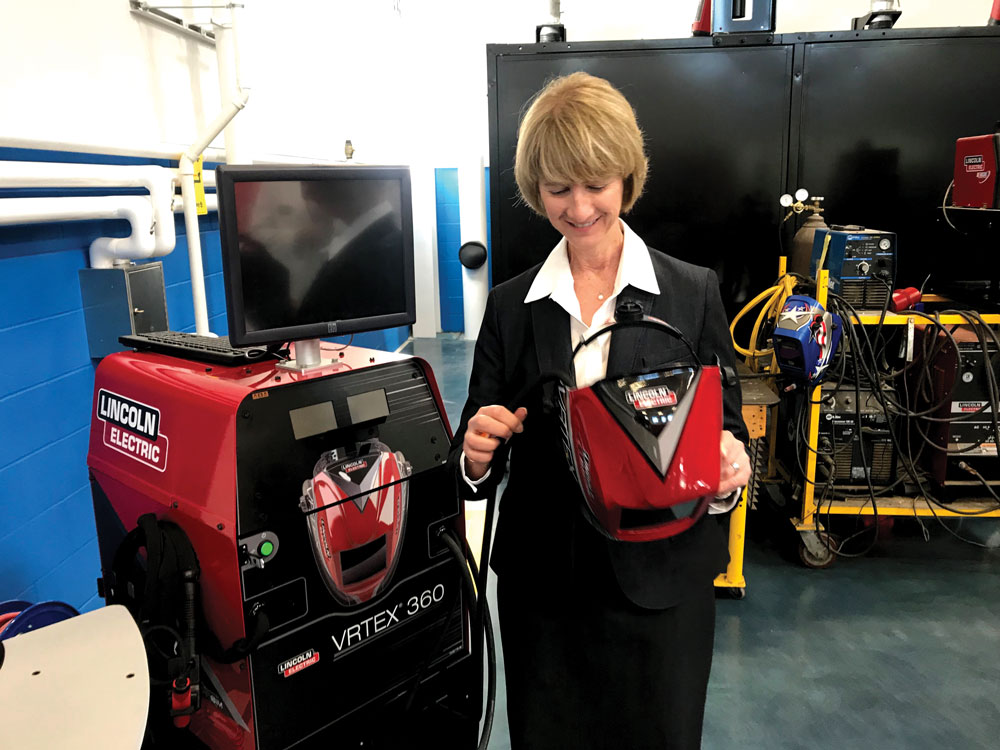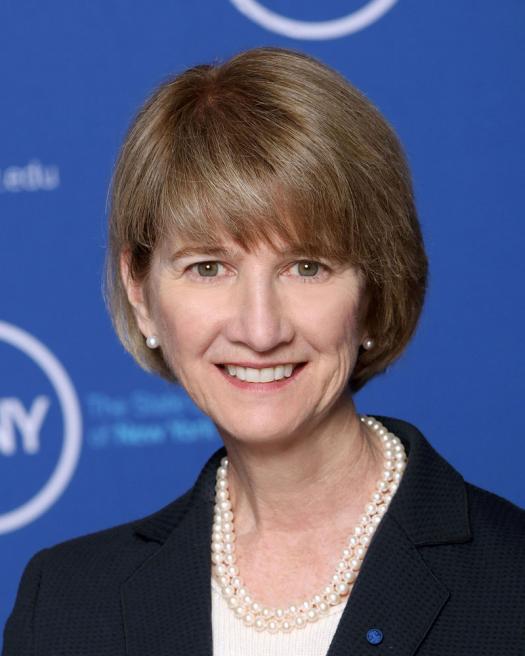Conversations with Maya: Kristina Johnson

Maya Ajmera, President & CEO of Society for Science & the Public and Publisher of Science News, sat down to chat with Kristina Johnson, Chancellor of The State University of New York and an alumna of the International Science and Engineering Fair. We are thrilled to share an edited version of their conversation.
You’re an alumna of the 1975 International Science and Engineering Fair. How did the competition impact your life and are there any particular moments that still stand out for you?
It was an amazing experience. In 1975, I became fascinated by holograms — I just thought they were magic. Although holograms are everywhere now, at the time they were not that well known. [Note: Johnson’s project title was “Holographic Study of the Sporangiophore of Phycomyces.”]
I ended up building a little lab in our basement and was able to reproduce the lab in my physics classroom at school. That’s the year I experienced my first all-nighter. I stayed up all night at my high school the night before the science fair. It was a little controversial to say the least.
My project did well, and it was exciting. As a result, I think competing at ISEF gave me confidence and enthusiasm about science.
At the time, I was really not aware that it was unusual to be a woman in science. It wasn’t until I went to college that I realized that it was unusual. That’s where doing well at ISEF gave me confidence. When I was told I didn’t belong, I could just think back to succeeding at ISEF.

I understand your high school did not have a girls’ lacrosse team so you practiced with the boys. At Stanford University, you started a women’s lacrosse team that became the varsity team. We still experience a gender gap in a variety of fields, from athletics to engineering. What strategies do you think are working and not working to close the gender gap?
Obviously, the biggest improvement for gender equity in sports was passing Title IX, wherein it became important to open up these opportunities for girls and women. When I got to Stanford, I learned that we didn’t have a lacrosse team and thought, well, we should start one. So, we did. Over the course of my nearly eight years at Stanford as an undergraduate and graduate student, it went from being a club sport to a club varsity sport. I think that’s maybe part of the answer: Leaders need to take charge when they see an opportunity to build something new. [Note: On the 40th anniversary of Title IX in 2012, Johnson was recognized as a 40 For 40 honoree by espnW and other organizations. The 40 For 40 event honored “women who have made an impact” after participating in high school and college sports.]
When I went into science and engineering at Stanford, I didn’t have any science or engineering faculty that were women. I only had two women professors in eight years. Only two, though I had terrific male faculty including my Ph.D. adviser, Joseph Goodman. When I graduated, I did not think that women were professors in science and engineering. I didn’t really think too much about it. It just was the way it was. One of the things that I’m not as happy about today is that there hasn’t been a significant increase in the number of women pursuing engineering. That needs to change.
Drawing on your experiences as chancellor of the SUNY system, dean of engineering at Duke University, an entrepreneur and a high-level government appointee in the Obama administration, what particular challenges do you think are keeping women in the sciences back?
In the early 1990s, the National Science Foundation did an interesting study that said women will pursue careers in science and engineering and stay in them if they can align their vocation with their avocation to help others.
I think the more that we humanize the field, the more attractive these careers will be to all individuals.
I also think part of it is that when women don’t see role models in their classrooms, they don’t know they can do it. I’m very passionate about bringing underrepresented minorities and women into the professoriate and the academy so we can inspire a new generation of diverse leaders. I think part of it really is when you are “other,” it is important to feel welcome.
You’ve reportedly said that there are three things you would never do. One is be a dean, two is start a company and three is write a book. You’ve done two out of three. I’m curious as to what has motivated you to take different turns in your career.
So, it is true. I did say I never wanted to be a dean. I never wanted to start a company. I didn’t want to write a book. I actually haven’t written a book yet, but I have a title for a book. I was thinking just yesterday I probably need to write it. So, stay tuned on that one.
I wanted to become a dean because leadership to me is common sense. I felt that if I could make the lives better for my fellow faculty members, that I could have a bigger impact and just make it better for all.
When I was a young professor, we established an engineering research center. I helped cowrite the grant. As part of the grant, there was an expectation that we were going to create a new workforce and new industries. I took that mission very seriously, which led me to leave academia and try to create those new companies, products, processes and a different kind of educated workforce.
Did you enjoy your time as undersecretary of energy at the U.S. Department of Energy?
You know, I did like it. It was a very intense period of time. Maybe it was because we had to invest $37 billion in energy and environment investments from the American Recovery and Reinvestment Act in addition to the broad $11 billion energy and environment portfolio. It was an honor to work for the Department of Energy. Every single individual I worked with was committed. We worked every weekend, every evening, to try and get funding out, so that we could create jobs, put people back to work and lower our greenhouse gas emissions.
While you were at Duke you created a fellowship that supported about a third of undergraduates so that they could spend 18 months doing research in labs. Are you thinking of similar things at SUNY, or are there any plans to partner with New York high schools to promote STEM education?
When I was at Duke, I saw that a lot of our engineering students were going to New York to join the financial industry, which is fine. But I thought it also would be great to introduce our students to a broader array of opportunities.
The program, called the Pratt Research Fellows, has students start work in research labs during the spring of their junior year, including the summer and all during their senior year. When those kids graduated, they were going to the financial sector, but they were also going on to graduate schools. It was exciting because they really caught the bug of innovation. So, yes, I’d like to start that at SUNY.
We’re also very excited about trying to link SUNY with high schools. One of the exciting things about SUNY is it’s the largest comprehensive university system in the country. We have high schools that we charter. We have 30 community colleges. We have 13 comprehensive, unique four-year institutions with master’s programs. We have technical-focused two- and four-year schools. Then, we have 14 doctoral-granting degree institutions, including five medical schools and three hospitals.
During my first State of the University System Address, I discussed four themes across our broad intellectual ecosystem. First, innovation and entrepreneurship. The second, individualized education. Third, energy and sustainability, and fourth, partnerships. Creating programs where all of our students are doing research and innovation together — I think that is very exciting.
What advice do you have for young people just starting their higher education or careers?
Get everything you can out of it. I played sports. I “hashed” at the French house to keep up my French. I worked in the labs. When you start in higher ed, it’s important to find an area that you can carve out outside the classroom. I recommend that students look up faculty with similar interests and make an appointment and ask to work with the faculty member as an independent study student.
What books are you reading now?
So, there’s a book George Packer wrote called The Unwinding, which talks about Youngstown when Delphi left and the real estate crash in Tampa. It weaves through these characters that we all know that were living at the time in those communities. Janesville by Amy Goldstein is by my bedside along with Seeing What Others Don’t by Gary Klein.


